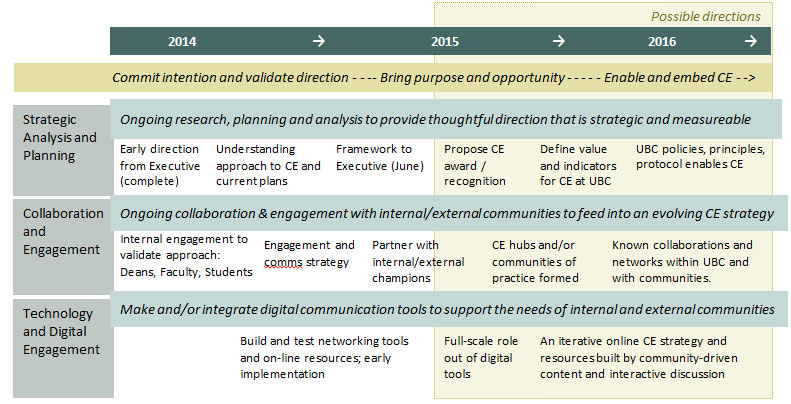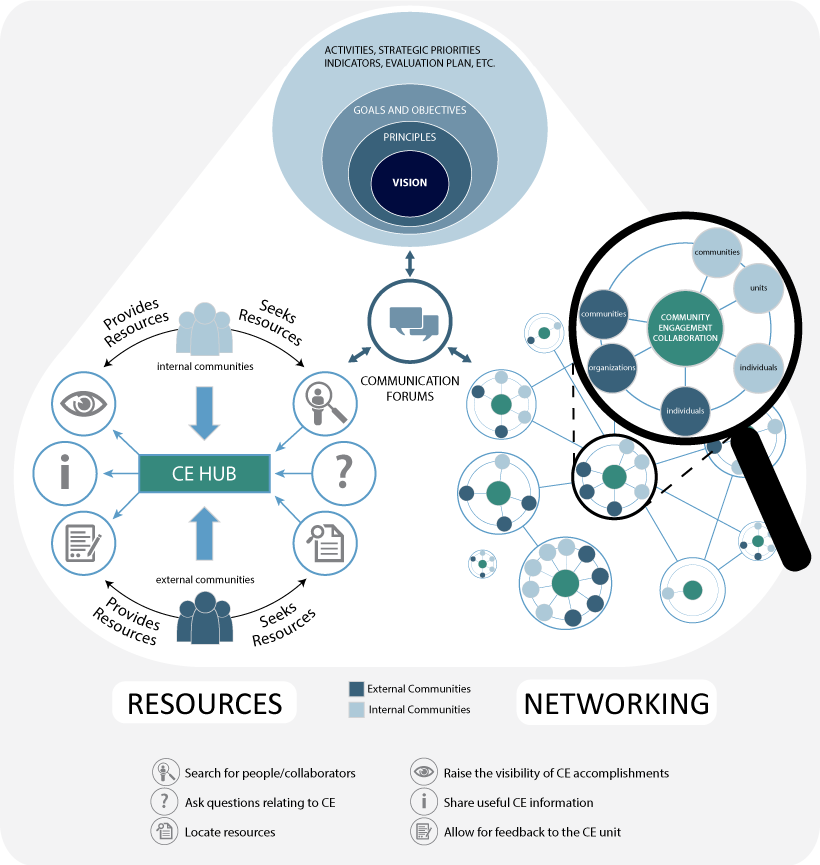What does this really mean in terms of action? We have identified three priority areas for next steps as we continue to listen, learn, engage, build trust and develop concrete deliverables: Strategic Analysis and Planning, Collaboration and Engagement, and Use of Technology and Digital Engagement.
Strategic Analysis and Planning
Developing a CE strategy requires listening and learning from others, testing ideas and conducting a well-reasoned analysis that articulates clear cause for moving in specific directions. We have begun a review of existing strategic plans, annual reports and web sites to be better informed and understand how many faculties and units do integrate CE into their plans and work. Following up with key contacts in faculties to learn more about current work, and how CE can be supported will be valuable. Other activities include determining options and uses for an “inventory” of what CE is happening at UBC today, exploring/establishing strategic partnerships and developing indicators for CE.
Collaboration and Engagement
In general, the approach to building this strategy will include a range of CE processes, from outreach, to listening and learning, to partnership.
Faculty involvement and support for engagement are essential for furthering the institutionalization of engagement.6
There are several possible next steps in terms of collaboration and engagement. Foremost is planning for internal and external engagement activities, starting with faculty, students and staff. Other key next steps include partnering with champion Faculties or areas – such as the Community Based Research Working Group chaired by the AVP Research – and developing a communications plan. Given the advantage of having a system-wide perspective, we have already been able to connect individuals, groups or initiatives from various faculties or units with common interests.
Use of Technology and Digital Engagement
Digital engagement is an important part of developing a CE strategy that will help to inform the strategy’s evolution while addressing needs related to CE at UBC. A digital “place” will be developed to support two identified needs, networking and resources, and to support ongoing communication.
We currently envision the digital platform as supporting curated discussions that will inform the building of the CE strategy. Developing both online networking opportunities and resources also responds to needs we have heard expressed to date, thus creating early wins. Figure 4 illustrates early concepts for how digital engagement might provide tools for networking and resources while, via communication forums (both on- and off-line), support the evolution of a CE strategy that grows and changes over time.
Timeline of Activities
The strategic next steps indicated above are expected to lead to a more defined CE framework at an institutional level (June 2014), which will in the long term begin to lay a foundation for an institutional culture of CE. Embedding CE into a large research university takes time, well beyond the next 3 years; however Figure 5 below shows a few immediate milestones and possible directions.



